The House of the Seven Gables Blu-ray Movie
HomeThe House of the Seven Gables Blu-ray Movie 
Kino Lorber | 1940 | 89 min | Not rated | Apr 23, 2019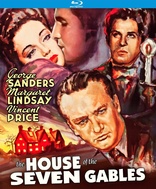
Movie rating
7.1 | / 10 |
Blu-ray rating
| Users | 0.0 | |
| Reviewer | 3.0 | |
| Overall | 3.0 |
Overview
The House of the Seven Gables (1940)
Jealousy, loyalty, and a family feud between two brothers are all at play in THE HOUSE OF SEVEN GABLES, based on the classic novel by Nathaniel Hawthorne. The sudden death of Jaffrey (George Sanders) and Clifford (Vincent Price) Pyncheon's father provides the vengeful and vindictive Jaffrey with the perfect opportunity to get his brother out of the way and seize the family fortune. Framed for murder and forced to leave his fiancée (Margaret Lindsay) behind, Clifford is sent off to prison, where he befriends Matthew Hargrave (Dick Foran), the descendent of the Maule family, with whom the Pyncheons have a long history of turbulence. Can the two join together to foil Jaffrey, or are the families destined to repeat the mistakes of the past and live out the curse of their ancestors?
Starring: George Sanders (I), Margaret Lindsay, Vincent Price, Dick Foran, Nan GreyDirector: Joe May
| Thriller | Uncertain |
| Drama | Uncertain |
Specifications
Video
Video codec: MPEG-4 AVC
Video resolution: 1080p
Aspect ratio: 1.37:1
Original aspect ratio: 1.37:1
Audio
English: DTS-HD Master Audio 2.0 (48kHz, 16-bit)
Subtitles
English
Discs
Blu-ray Disc
Single disc (1 BD)
Playback
Region A (B, C untested)
Review
Rating summary
| Movie | 3.0 | |
| Video | 3.5 | |
| Audio | 4.5 | |
| Extras | 1.5 | |
| Overall | 3.0 |
The House of the Seven Gables Blu-ray Movie Review
Reviewed by Dr. Stephen Larson May 21, 2019Although not as widely adapted to the silver screen as Henry James and Charles Dickens, Nathaniel Hawthorne has had several of his classic works made into films since the silent era, including multiple renditions of his much beloved novel, The Scarlet Letter, and his short story, "Feathertop." In 1940 Universal Pictures was surprised and elated that no other studio had vied for the rights to Hawthorne's 1851 novel, The House of the Seven Gables, up to that point. After snatching up the rights, Universal cast a young Vincent Price, George Sanders, and Margaret Lindsay to play the leads. The studio tapped prolific silent filmmaker Joe May to direct. (May directed the wonderful psychological drama, Asphalt [1929], which is a personal favorite of mine.) May's silent film roots are seen in the post-credits when the audience sees pages from Hawthorne's novel, a common trope in the Teens and Twenties of "filmed literature." (Apparently, May and the studio added this prologue near the end of filming.) We learn that an old New England house has had a curse placed upon it since the 17th century when the Pyncheon clan illegally acquired it from proprietor Matthew Maule. The Pyncheon patriarch accuses Maule of witchcraft and the original owner is sent to the scaffold. His dying words, ”You and yours shall drink blood," will haunt the house and future Pyncheon family members. The picture flash-forwards 160 years later to Salem, Massachusets where Jaffrey Pyncheon (George Sanders) has been summoned from Boston by his father Gerald Pyncheon (Gilbert Emery) to finalize the foreclosure of the house (it's close to being sold for bankruptcy). Though the youngest son, Clifford Pyncheon (Vincent Price), supports this resolution, Jaff opposes it. He thinks the house is worth a fortune and wants to stick around to scour the walls and attic for half a million in gold he believes are hidden there. Cliff's lover, 18-year-old Hepzibah (Margaret Lindsay), sides with him, much to Jaff's chagrin. Unfortunately, something bad happens to father and Cliff is sent to prison. Jaff thinks he's the rightful heir but the house turns out to belong to Hepzibah, who banishes him and works on getting Cliff out of jail.
I haven't read The House of the Seven Gables but understand from my research that some (but not too many) changes were made to the original source. Associate producer Burt Kelly had screenwriters Lester Cole and Harold Greene make Hepzibah and Clifford as distant cousins with amorous affection for the other. (In Hawthorne’s book, they're just brother and sister.) In the novel, Jaffrey is Cliff’s uncle but the adaptation makes him Cliff's avaricious and evil brother. Other than altering the dynamics of the characters' relationships, the novel and movie are pretty similar. "In every other respect book and film are in as complete agreement as a hand in a glove," wrote movie critic Herbert Kenney, Jr. of The Indianapolis News.
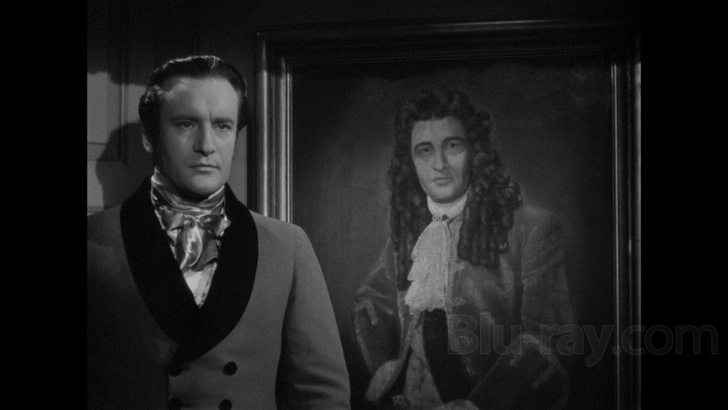
The House of the Seven Gables is classic melodrama with timeless themes of family greed, comeuppance, and redemption. It's also a very polished production with precise framing by cinematographer Milton Krasner. Both Price and Sanders demonstrate the star power they'd later gain in Hollywood. Their performances helped open the door for major roles to come. Unfortunately, the same can't be said for Margaret Lindsay, who really plays two characters completely different in mood and temperament. Several critics rightly praised her work here and forecasted she's be an A-list star. Other commentators reduced her to a poor woman's Bette Davis. (She appeared opposite Bette in a subordinate role two years earlier in Jezebel.) Lindsay's career never reached the heights that it could have.
May's film does suffer from some pacing issues throughout. It moves rather slow in spots and loses momentum in other places. It also suffers comparatively from other literary adaptations of the period, especially William Wyler's Wuthering Heights (1939). It's a solid but unspectacular period drama.
The House of the Seven Gables Blu-ray Movie, Video Quality 
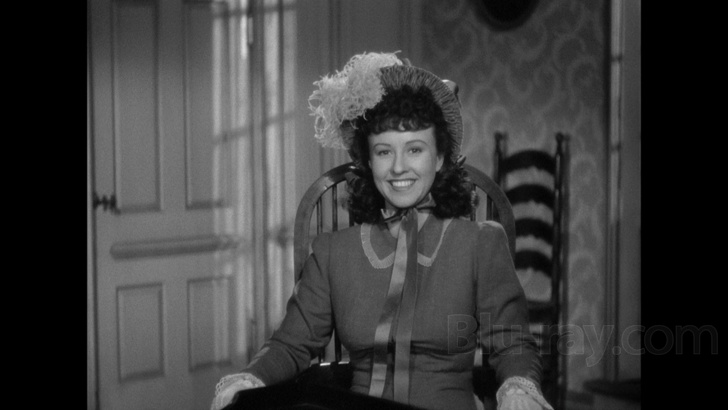
The House of the Seven Gables premieres on Blu-ray courtesy of Kino Lorber on this MPEG-4 AVC-encoded BD-25. Like the recently released The Strange Door, this is another vintage Universal title from the MOD "Vault Series" to receive a digital makeover. The print used for this release isn't as in as good of condition as TSD, though Seven Gables is older by eleven years. Presented in its original aspect ratio of 1.37:1, the transfer looks relatively good. Contrast, grayscale, and shadows within the frame are all positive standouts. The print shows the most wear during scene transitions and reel changes. You'll notice white specks and other anomalies along the walls of the judge's chamber in Screenshot #18. There's also a tramline in the movie's opening scene (#17). Title cards (e.g., #19) and filmed shots of cursive writing on paper (#20) have been pillarboxed. The main feature boasts an average video bitrate of 27543 kbps.
Kino accommodates the hour-and-a-half feature with eight scene selections.
The House of the Seven Gables Blu-ray Movie, Audio Quality 
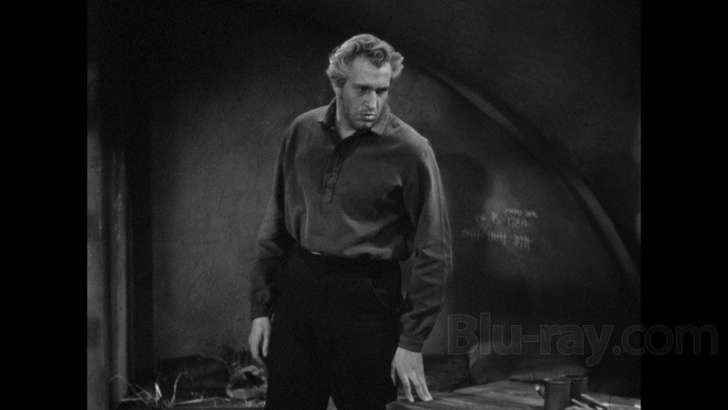
Kino supplies the original monaural sound track with a DTS-HD Master Audio Dual Mono (1557 kbps, 16-bit) mix. For a nearly eighty-year-old film, the master is in outstanding shape with no major flaws. Spoken words are usually intelligible, although I had to turn the volume up to hear certain passages. Frank Skinner's music fluctuates between being merry and gloomy. I thought my speakers handled the rise and fall of pitch levels with aplomb.
Kino provides optional English subtitles which can be activated from the menu or via remote control.
The House of the Seven Gables Blu-ray Movie, Special Features and Extras 
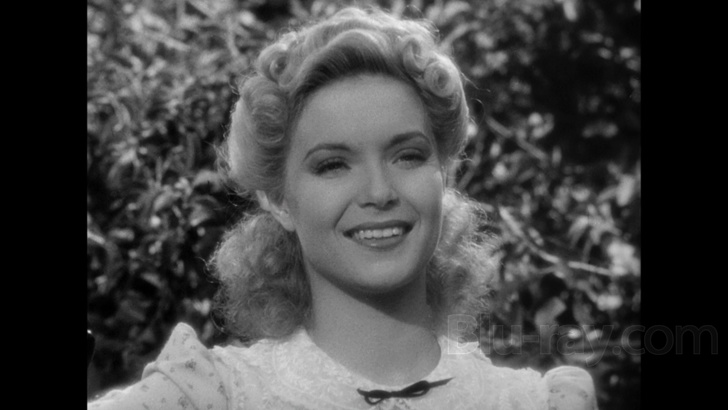
- NEW Audio Commentary by Film Historian Troy Howarth - Howarth delivers a dry, witty, and occasionally funny chat about the film's production and reception. He gives mini-bios for practically all eleven players in the cast and what other movies they appeared in. I would have liked more historical anecdotes (if Howarth could have located them) but he doesn't waste a second of time. In English, not subtitled.
- Bonus Trailers - trailers for several other old Hollywood films but none for The House of the Seven Gables.
The House of the Seven Gables Blu-ray Movie, Overall Score and Recommendation 
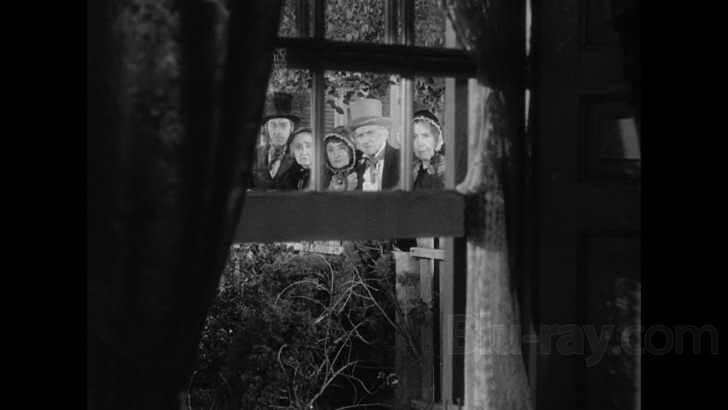
I differ from Troy Howarth who claims that The House of the Seven Gables is a genuine horror picture. It definitely has some horrific moments but is better classified as a dark period piece. The narrative has a "What goes around, comes around" circular arc to it that while clockwork in execution, meanders in spots and ultimately becomes predictable. (This is more of a criticism of how it's translated to the screen, not of Hawthorne.) The story is so dark and depressing that I render it has limited replay value. Kino Lorber dishes up an above-average transfer and a cleaned-up lossless mono track. Howarth's commentary track is packed with lots of good trivia. RECOMMENDED especially to fans of Vincent Price and George Sanders.
Similar titles
Similar titles you might also like

The Black Cat
The Vanishing Body
1934

Marrowbone
The Secret of Marrowbone
2017

Ruby
Blood Ruby
1977

The Killing Kind
Standard Edition
1973

The Raven
1935

The Invisible Man 4K
1933

Josie
2017

Dr. Phibes Rises Again!
1972

Terror-Creatures from the Grave 4K
5 tombe per un medium 4K
1965

The Devil Doll
Warner Archive Collection
1936

The Ghoul
1933

Return to Sender
2015

Taste the Blood of Dracula
1970

Libido
1965

No Good Deed
2014

Pyewacket
2018

The Lodgers
2017

The Cured
2017

Halloween 4K
2018

Bound to Vengeance
2014